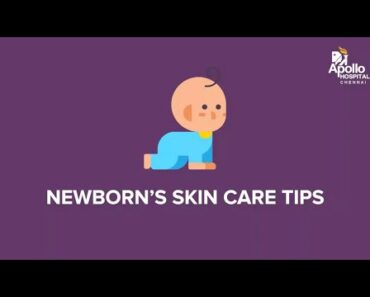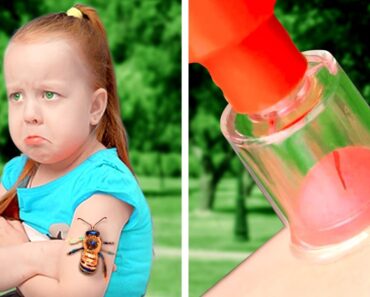image: Shutterstock
Angelman syndrome is a genetic disorder with severe neurological problems. It is characterized by developmental delays, impaired balance and coordination, learning challenges, and speech difficulties. Babies may also have a small-sized head with a flattened back.
Developmental delay is one of the first symptoms seen at the age of 6-12 months. The other characteristics manifest later. It is a rare disorder occurring in about 1 in 12,000 to 20,000 people (1).
Read this post to learn the causes, symptoms, treatment, and risk factors for Angelman syndrome in babies.
Signs And Symptoms Of Angelman Syndrome
Children with Angelman syndrome may show a wide range of symptoms. These symptoms may include the following(2)(3).
1. Gastrointestinal problems: Gastrointestinal problems could be seen early in babies with Angelman syndrome. Some common problems are constipation and acid reflux, which may gradually proceed to GERD (gastroesophageal reflux disease).
2. Feeding problems: The baby could display problems latching to the breast due to poor sucking reflex. Some babies may suckle for only short periods, while some may be unable to swallow the milk.
3. Persistent cheerfulness: Infants with Angleman syndrome may seem unusually cheerful, excitable, and prone to frequent laughter without any provocation. They might show a fascination with water, music, and shiny objects.
4. Unique behavioral attributes: Some of the behavioral attributes that may be more noticeable at a later age are hyperactivity and short attention span. The baby may also show trouble falling asleep and sleep less than other children of the same age.
5. Abnormal movements: Affected babies and toddlers may show jerky movements, such as tremors in arms and legs. Coordination of movements may be difficult for them. They may often continuously flap their hands. Decreased muscle tone in the head and torso (hypotonia) and muscle overactivity in arms and legs (hypertonia) may be observed. Some also show overactive reflexes (hyperreflexia).
6. Speech abnormalities: Babies with Angelman syndrome are likely to show speech and language difficulties, which may be more noticeable as they grow older. Some may not speak at all, while some may only utter a few words. They generally understand simple commands and may communicate using gestures.
7. Seizures: Toddlers older than one year may show fits and seizures. These may more commonly occur between the ages of two and three years. Seizures occur in about 80-85% of Angelman syndrome cases.
8. Walking issues: Toddlers with a less severe form of the disorder might walk between the ages of two and three years. Those with a more severe form may not walk until five to ten years. About 10% of affected children need assistance to walk. Most display a poor gait (ataxic gait) with unusual features, such as walking with hands in the air.
9. Physical problems: Most children with Angelman syndrome could present unique physical features and issues, such as crossed eyes (strabismus), sensitivity to light, uncontrolled eye movements (nystagmus), and problems with visual clarity (visual acuity). They might drool excessively, stick their tongue out, and have a wide mouth with widely-spaced teeth. Facial features include deep-set eyes and a pronounced chin. The hair, eyes, and skin might be paler due to the absence of specific melanin pigments. Some may display progressive, long-term problems, such as scoliosis.
10. Developmental delays: Babies and toddlers with Angelman syndrome may often display several developmental delays. Developmental delays in motor skills are usually more common. Delay in sitting and walking are some of the most easily noticeable delays.
Causes Of Angelman Syndrome
Angelman syndrome is caused due to absence or inactivation of the UBE3A gene. These problems associated with the UBE3A gene can be due to the following genetic mechanisms (1) (2).
- Chromosome deletion: About 70-75% of cases of Angelman syndrome are caused by deletion of the region of maternal chromosome 15 containing the UBE3A gene.
- Chromosomal rearrangement: In rare instances (less than 1%), a part of chromosome 15 can break away and relocate.
- Mutations: In about 10-20% of cases, mutations in the UBE3A gene could cause Angelman syndrome.
- Defects in genomic imprinting: We usually receive two copies of genes from each parent, except those exclusive to the Y chromosome. In some individuals, only one copy of the gene may switch on to perform functions. This is known as genomic imprinting. Some children may have only one copy of the UBE3A gene functional. However, due to defects in genomic imprinting, the single UBE3A gene copy is switched off, leading to Angelman syndrome. It occurs in 3-5 % of cases.
- Paternal uniparental disomy: In some cases, the child receives two copies from the father rather than receiving one copy of a gene from each parent. It usually occurs due to receiving two copies of paternal chromosome 15 instead of one. This is known as paternal uniparental disomy. In certain cells of the body, such as those of the brain, only the maternal copy of the gene is functional. But the child lacks the maternal UBE3A gene, causing the child to develop Angelman syndrome. This scenario is observed in 2-5% of cases of Angelman syndrome.
- Unknown causes: In 10-15% of cases, the causes of Angelman syndrome are unknown or not adequately discernible.
Is Angelman Syndrome Inherited?
Spontaneous genetic events, such as missing maternal chromosome 15 or paternal uniparental disomy, are not considered inherited. However, specific mutations in the UBE3A gene or mutations in genes that influence or control UBE3A gene activation may be inherited. Inherited Angelman syndrome accounts for about 3-5% of cases (2).
Risk Factors Associated With Angelman Syndrome
There are no definite risk factors for developing Angelman syndrome (4). In most cases, individuals with Angelman syndrome do not have a family history of the condition. In rare cases, one in 10,000 individuals may develop the syndrome if they have a family history. The risk of a baby being born with the syndrome might be higher if they already have a sibling with the condition.
Prognosis Of Angelman Syndrome
Those affected with Angelman syndrome may show improvement in certain behaviors, such as improved sleep and less excitability, as they grow older. However, several other issues such as speech problems, intellectual impairment, and motor difficulties may last forever.
Prognosis may be poorer in cases of Angelman syndrome caused by gene deletion (5). Those with Angelman syndrome without gene deletions typically show better developmental progress and speech patterns.
Regular twitching of arms and other parts of the body may continue to occur in the child. In some cases, the seizures go away or decrease in intensity as age progresses; however, they might continue for a lifetime in a few cases. Other problems, such as gastrointestinal problems, may persist for a lifetime or resolve during adulthood.
Children with Angelman syndrome usually do not display any delay or problems with puberty. They may not display any developmental regression, that is, they may not stop displaying existing skills. The life span for most individuals with Angelman syndrome is normal.
Complications Associated With Angelman Syndrome
Angelman syndrome may cause the following health complications (6).
- Nutrition-related issues: Babies with Angelman syndrome may often display feeding difficulties. They may have trouble latching to the breast and swallowing milk. It could lead to malnourishment and nutritional deficiencies. Feeding such babies high-calorie formula through specialized feeders can assist in their weight gain.
- Sleep disorders: The sleep patterns of children with the syndrome are often erratic, causing sleep-related problems, such as waking up several times in the night. The issue can be resolved with medications or therapy in a few cases.
- Curvature of the spine (scoliosis): Side-to-side curvature of the spine (scoliosis) might occur in some individuals with Angelman syndrome. The condition could limit mobility and movement.
- Obesity: Older children and adults affected by Angelman syndrome may be prone to obesity.
Treatment For Angelman Syndrome
There is no known cure for Angelman syndrome, but some treatment options could help the child lead a better life. The treatments mostly focus on managing the symptoms (3).
- Severe seizures can be managed with the help of anti-epileptic medications. In difficult cases, multiple medications may be required.
- Behavioral therapy may help control hyperactivity, attention deficit, and other abnormal social behaviors. Sleep patterns may also show improvement with this technique. In severe cases, sedatives may be required for sleep issues.
- Speech impairments could be managed with the help of speech therapy. Audio aids, sign language, computer picture-based systems, and voice emitting devices can also assist children in communication.
- Physical therapy may help in improving balance and walking. In some instances, ankle braces or support might be recommended. Scoliosis may need braces or surgical intervention depending on the severity of the condition.
- Laxatives could help with constipation cases. Gastroesophageal reflux can be managed using motility drugs that allow the proper passage of food through the gastrointestinal tract.
- Sucking problems in babies can be managed using special nipples that could make the feeding process easier.
- Medical, social, and vocational training may help improve the quality of life in the affected children.
How To Prevent Angelman Syndrome?
There is no way to prevent Angelman syndrome since it is a genetic disorder (7). Adequate prenatal care could help in reducing the risk of genetic disorders in general. If you have a family history of the syndrome or already have a child with the syndrome, consult a genetic counselor before planning your next child.
Frequently Asked Questions
1. What is the life expectancy with Angelman syndrome?
Most individuals with Angelman syndrome usually have normal or close to normal life spans. Any adverse effects on life expectancy usually arise due to complications of the syndrome and its associated accidents. People with Angelman syndrome can lead long lives when provided adequate special care (8).
2. Do babies with Angelman syndrome cry?
Babies with Angelman syndrome do cry, but the frequency is less compared to babies without the syndrome. It may usually be due to developmental delays and speech impairment. The baby with the syndrome may also make fewer babbling and cooing sounds (9).
3. Why is the Angelman syndrome also called happy puppet syndrome?
Dr. Harry Angelman, who first identified the syndrome, noticed similarities between those with the disorder and the subject of a renaissance painting depicting a boy with a painting, which resembled an illustration of a puppet. The physician chose to name the syndrome as happy puppet syndrome also due to the general cheerful demeanor of those affected. The term is no longer used and is now considered inappropriate (10).
Angelman syndrome in babies and toddlers could be managed with early diagnosis and treatment. If you already have a baby with the syndrome, speak to a genetic counselor before planning your next pregnancy. While the condition might last for a lifetime, adequate care and management can help children achieve their potential and lead normal healthy lives.


































